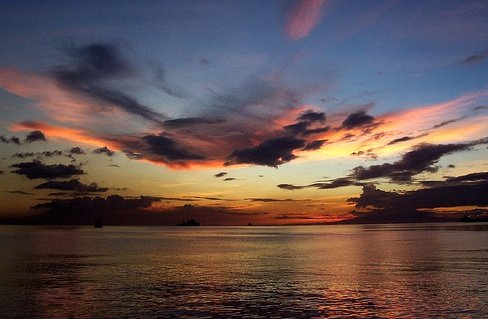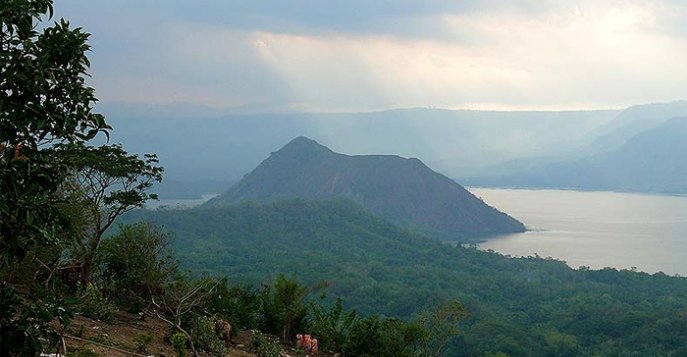Weather in the Philippines
As a rule, the weather in the Philippines is stable and predictable: it is hot and humid throughout the year. At the same time, even during the rainy season, there are long breaks in precipitation. Downpours are heavy, and after a while sunny clear weather sets in, when you can relax on the beach, walk around the city, climb mountains. In the south and north of the islands, the air temperature in January, February and March differs from the temperature in May, June and August by only 2-3 degrees.
But not only the warm weather made the Philippines a popular world resort. Clean sea air, magnificent beaches, luxurious nature, cheap food, excellent service – all this is highly appreciated by vacationers.
Of course, tourists tend to come here not during the rainy season, but in early autumn or spring, when it is dry and warm on most of the islands. The comfortable weather in the Philippines in January is especially pleasing to vacationers – a real holiday for tourists who went to the islands to spend the Christmas holidays. Transparent blue sky, serene ocean, soft sun – as if there are no raging typhoons and roaring storms here.

Holiday seasons on the islands
The hospitable Philippines opens the tourism season in spring, in March (this time is called the High season, which means “the best season”). The traditional holiday ends at the end of June. However, scientists believe that in recent years, the pronounced seasonality has been erased and the climate on the islands is gradually leveling off. But this is the opinion of professors, and tourists still “track” the traditional holiday season in the Philippines, take tickets in advance (in winter) in order to bask on snow-white beaches in March.
From the end of April comes the most popular tourist season in the Philippines, which they call Golden Week. This time does not last long and ends after the first week of May. At this time, water and air on the islands are compared in temperature (up to 32°C during the day, up to 28°C at night).
Hot weather is easily tolerated by vacationers, as the air is constantly refreshed by the sea breeze. In the waterfalls, the water warms up to 26 degrees. During this holiday season, the Philippines resembles a piece of paradise – nature is so calm, friendly and serene.
Of course, the weather in December in the Philippines is also quite suitable for many tourists, although occasionally the sky frowns, and sometimes long waves roll on the sandy shore. But you should not worry: if the weather suddenly deteriorates at the height of the holiday, then this will not last long: in 20 minutes the gentle sun will shine again.
The “dry” period, which begins in December and ends after the first “golden week” in May, is due to the influence of northeast winds (“trading wind”), which bring relatively cool weather (25-28 ° C) and dispel clouds. It is extremely rare for the Philippines to disappoint swimmers with January weather, but there are many options for alternative holidays.

Rainy season in the philippines
Tourists who come to the islands during the “golden” time cannot even imagine how peculiar the climate in the Philippines is. From mid-May, when the rainy season begins, the likelihood of typhoons increases. The air temperature remains at the same level (28-32 ° C), but because of the high humidity, the heat is more difficult to endure.
Interestingly, the showers come every day, but at a certain time, as per the schedule. For example, one week it may rain from 8 am to 12 noon, and then the “schedule” changes, and precipitation falls at night.
In October, the weather in the Philippines is capricious and changeable, typhoons often fly in, accompanied by heavy rainfall. The ocean is rarely calm: sometimes it storms a little, then huge waves roll in. The roar of the surf is heard far beyond the coastline. The average level of precipitation falling during the rainy season in the Philippines in the region of the Lowlands reaches 2030 mm.
Four main climatic zones
Based on the total amount of precipitation, four main zones of the region are distinguished:
- East coast of the islands of Bohol, Luzon, Leyte, Sulu archipelago, central part of Mindanao. Here precipitation falls evenly throughout the year.
- West coast of the islands of Negros, Luzon, Mindoro, Palawan. In summer and autumn, from June to November, there are heavy rains here, and from December to May it is dry (no more than 200 mm of precipitation).
- East coast of Mindanao, northeast of the islands of Samar and Luzon. Abundant precipitation falls all year round, in autumn typhoons rage here.
- Northwest coast of Mindanao, east of the islands of Panay, Negros, Mindoro, Cebu. There is a lot of precipitation, but from November to April it is relatively dry.
